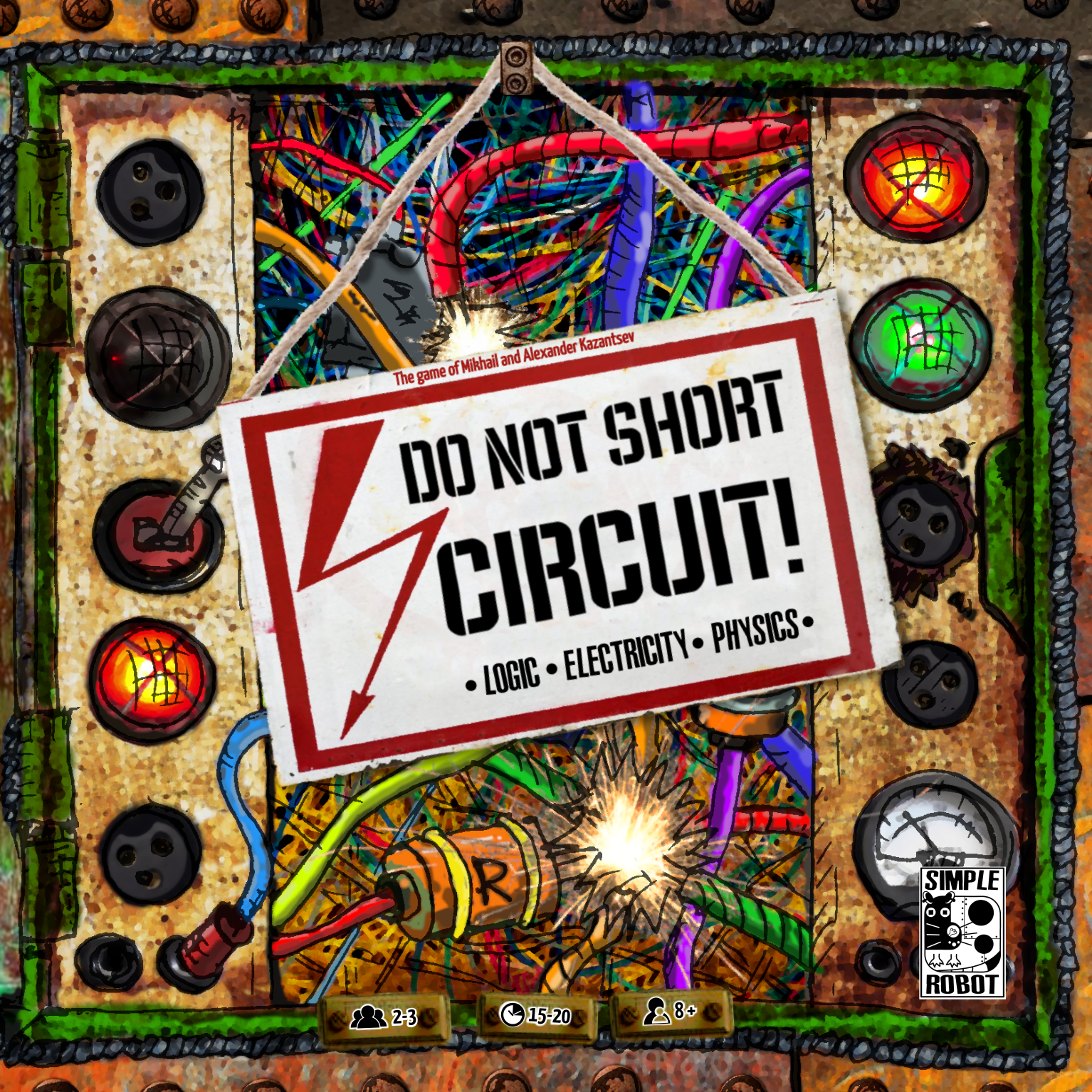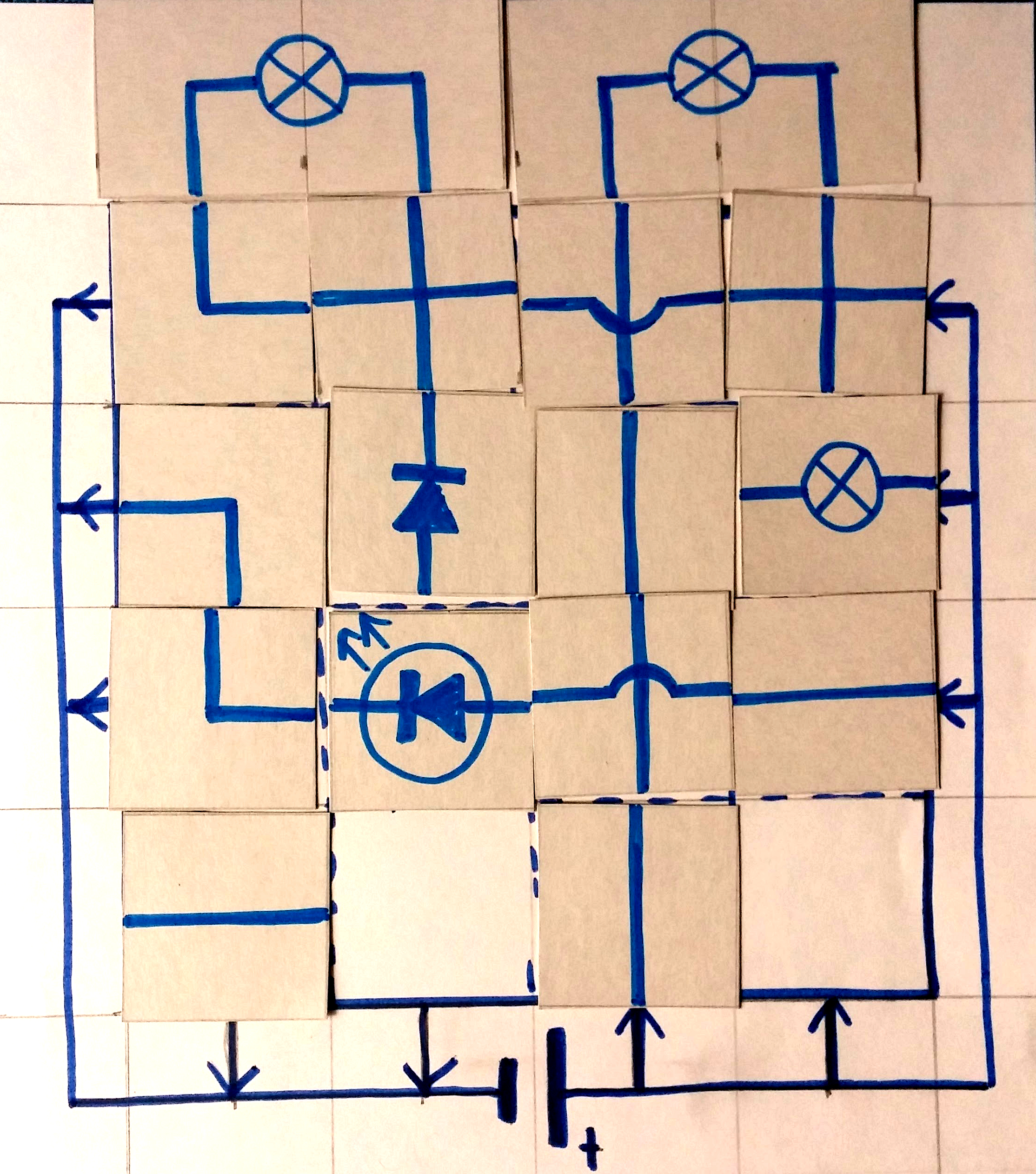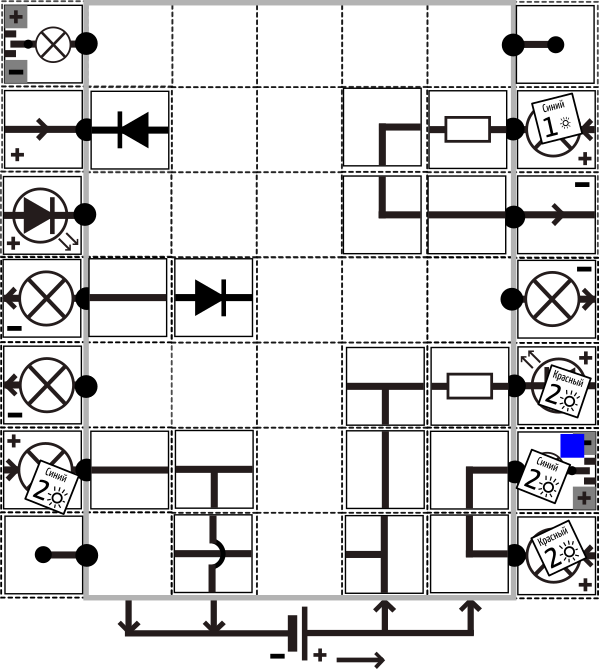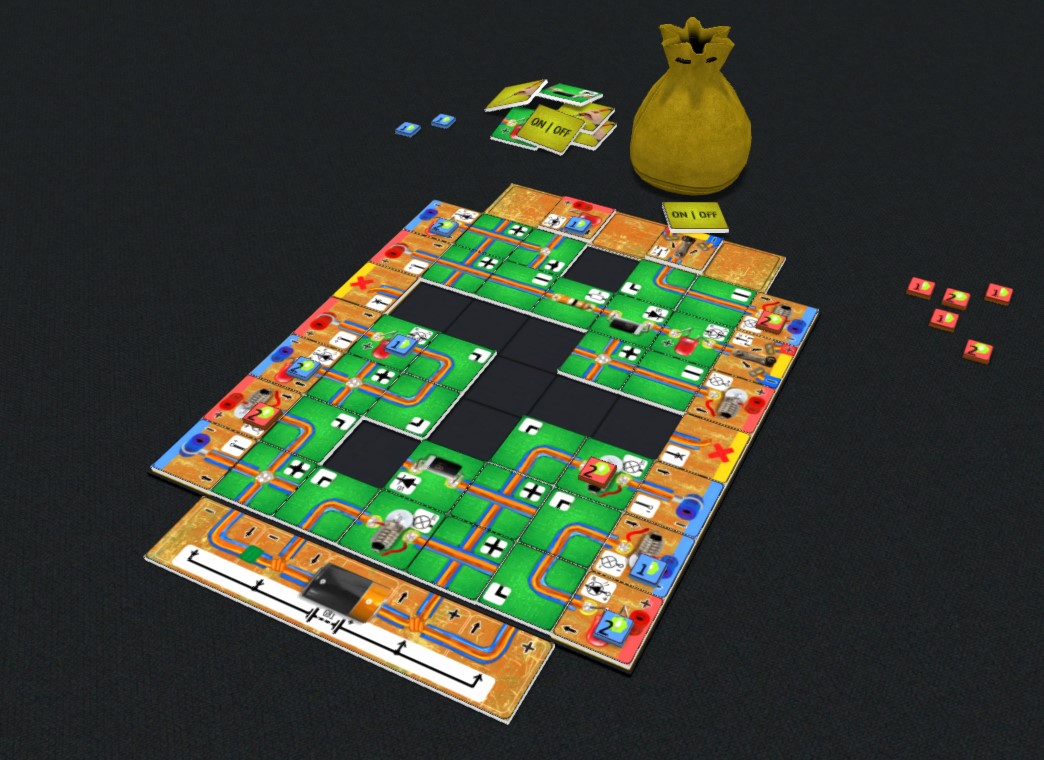
I made the “electric” designer of… cardboard. Alas, the project still remains at the prototype stage, not developing into an industrial “physical” look and is waiting for its time (and investor).
But I decided to go further — once we started making cardboard, we’ll bring the situation to its logical conclusion — we’ll make a complete cardboard board game, but with an electric setting and a learning effect. There were a lot of options — starting from a simple “walker” and ending with Ameritrash from a zombie with electron movement and vicious short circuits and swollen capacitors.
As a result, I decided to dwell on a logical abstract, since the schematics of electrical circuits are very suitable for it. Said and done — as a result of the first iteration, the game “Circuit” was born.

The task of the players in the duel mode was to build a working electrical circuit from the power source to the light bulb. Who lit one or both light bulbs — he won. Of the components of the field, you could lay out a resistor, an LED (which burned out without a resistor) and a diode that worked… like a diode. That is, allowed to "cut off" the chain opponent.
During the following years, the game began to transform and change. At first, it was decided to transfer it into Space and, instead of light bulbs, supply power to the engines of the spacecraft. After that, it was decided to light the bulbs not strictly on top of the field, but laying them in any place of the playing field. As a result, the “repair” option of the robot scheme was selected, when players are offered a pre-prepared playing field with light bulbs, LEDs and power buses located on the sides and bottom, and he needs (also in the fight to rivals) to increase his level of electrics and “repair” the greatest number items.

Now it was possible to create not one continuous, but different electrical circuits (and constantly checking them for operability and short circuit), which made the players choose different tactics and think over the strategy of placing elements. And the number of players increased to three (and in theory to four).
And if you can add items, why not remove them? Soldering irons were introduced into the game and now you can drop the interfering element and replace it with a new one (if you have time). Also, switches have been added to the game that can be “closed” to the positive or negative power line.
And so that the player’s life was even more difficult, transistors (in key mode) and photodiodes were introduced into the game, as well as a reserve for new elements. Plus added points, the achievement of a certain level of which gives the player the title of “Grief-electrician” “Chief electrician”.
The game began to get a finished look (at the same time changed its name to “Do not short Circuit!”) — there is a logical component, there is a need to at least learn the basic principles of building an electrical circuit and its components, interest to children and adults too (judging by the tests). In this form, the game has lived and been tested for the last six months and is now beginning to “overgrow with meat” — that is, to get a colorful decoration.
For some time, I “tossed” between leaving the game “as is” in the form of black and white schemes and making it beautiful. The scales leaned toward beauty.

Someone may say that the electric “Carcassonne” has turned out, and will be partially right (tiles, the mechanism for building continuous “roads” with setting lights tokens), but in fact the game turned out to be not original (with the current number of games being released it’s hard to come up with a new mechanic) but definitely unusual.
You can download, print and try this game from its page on BGG and after publishing on June 2019, buy a Russian box (game is language independent) with English rules in our store at EBay.

